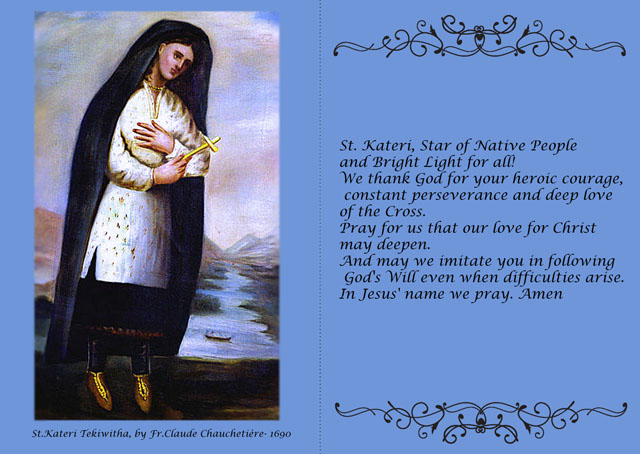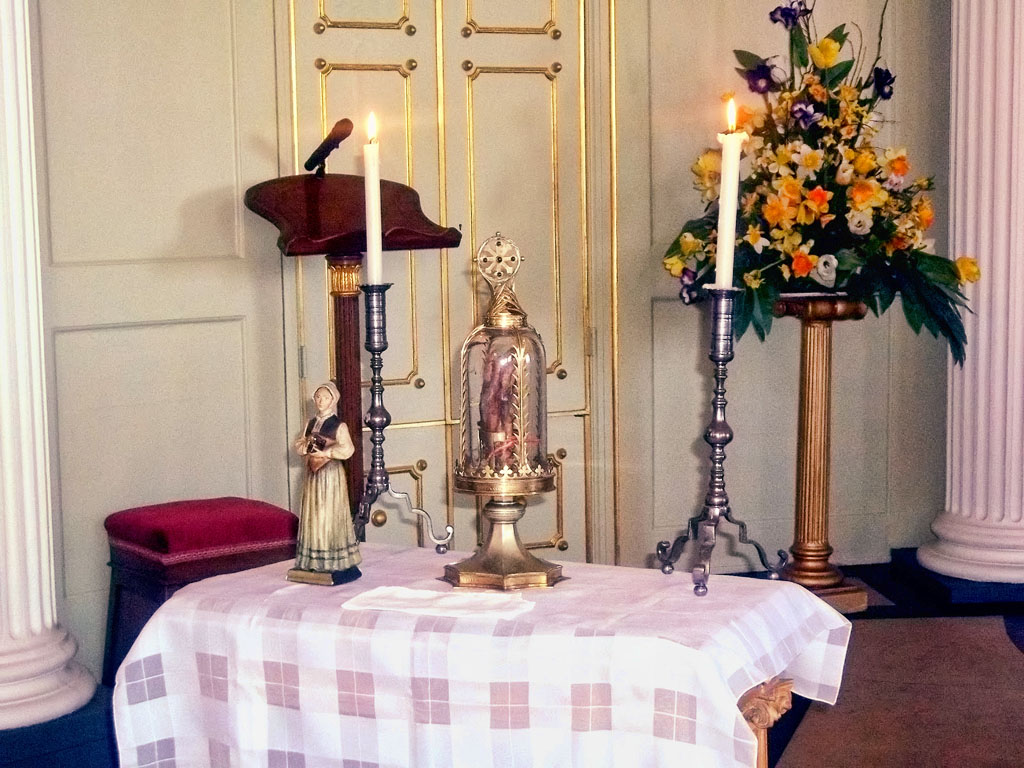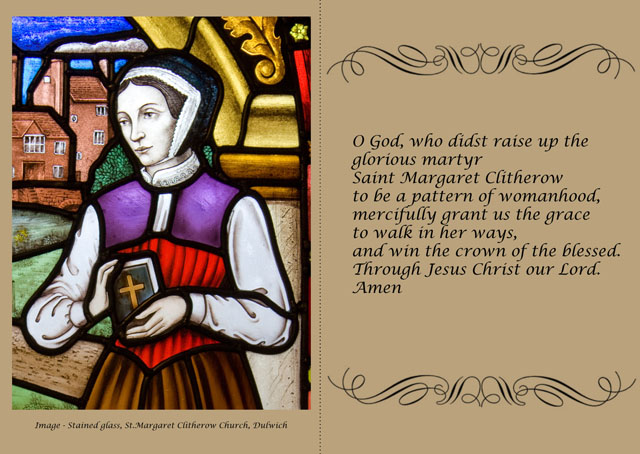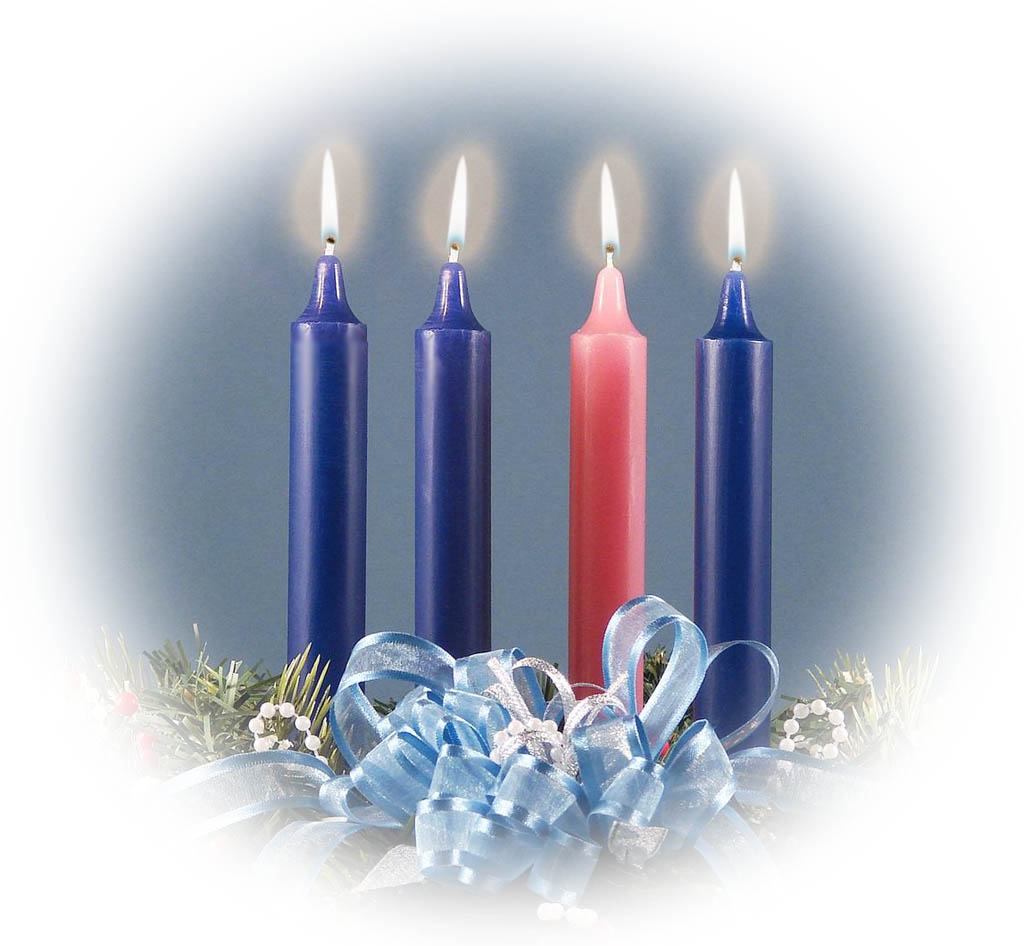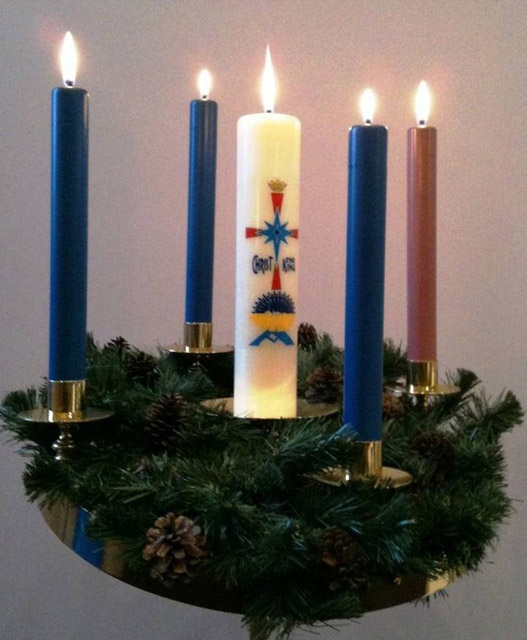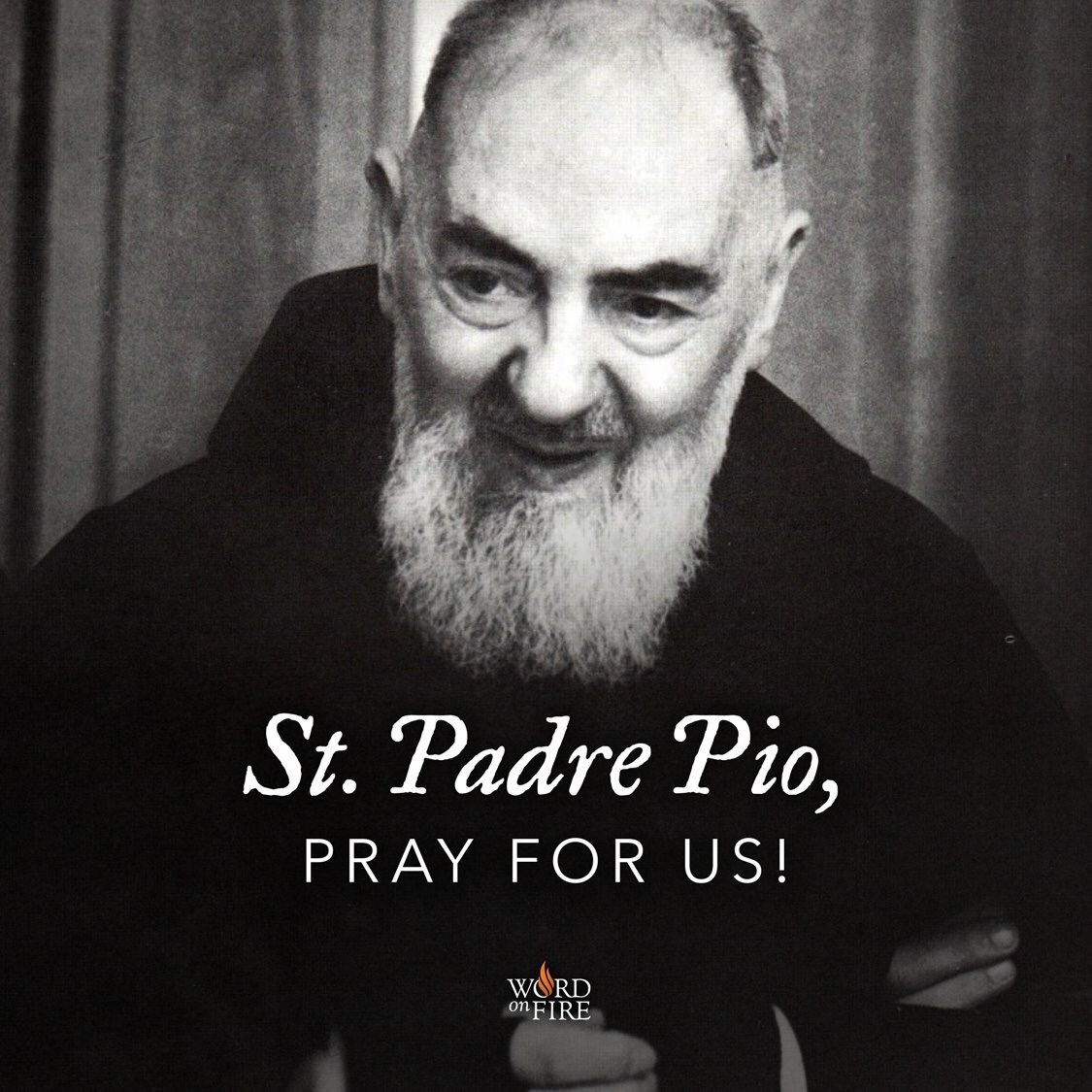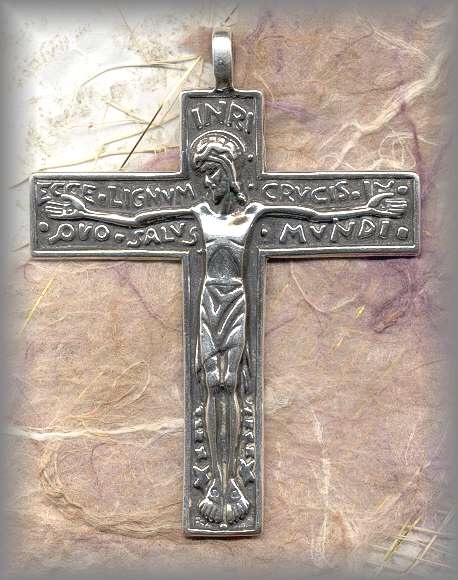In an article at Ignatian Sprituality, a service of Loyola Press, Tim Muldoon writes:
“It takes a great deal of slow, careful, thoughtful work to learn a language. First there must be the example of someone fluent in that language who acts as a model. Next, there must be careful listening, repeating of sounds that are foreign, and memorizing words and their unfamiliar nuances. Over time one builds small sentences to convey basic meanings. Months, even years later, one grows in the ability to write and speak sentences to convey ever more complex ideas: from “I like you” to “Shall I compare thee to a summer’s day?”
We live in an age that suggests that the strictures of church distract one from the spiritual life—that church is all about rules, and spirituality is all about life and love. That opinion is wrong. Church—by which I mean the community of people rooted in a history of worshiping God—is indeed governed by rules, but so is language, and both take hard work to master. But the mastery, the virtuosity, the poetry, is liberating in its beauty. Immersion in the life of the Church is an immersion in the life of Christ writ large over human history. It demands careful learning. For that reason, early Christians designated the period known as the catechumenate as a many-years-long initiation into the life of the Church. Learn the grammar of the Church’s life, its wisdom went, and you will be free. God is there in the unknowing; God is there in the learning; God is there in the deepening of wisdom, the poetry of the Church’s life.”
The full article and much more may be read at https://www.ignatianspirituality.com/
© Copyright 2018 Loyola Press. All Rights Reserved. Used with kind permission – https://www.loyolapress.com. https://www.ignatianspirituality.com
Now there was a disciple in Damascus named Ananias. The Lord said to him in a vision, ‘Ananias.’ He answered, ‘Here I am, Lord.’ The Lord said to him, ‘Get up and go to the street called Straight, and at the house of Judas look for a man of Tarsus named Saul. At this moment he is praying, and he has seen in a vision a man named Ananias come in and lay his hands on him so that he might regain his sight.’ So Ananias went and entered the house. He laid his hands on Saul and said, ‘Brother Saul, the Lord Jesus, who appeared to you on your way here, has sent me so that you may regain your sight and be filled with the Holy Spirit.’ And immediately something like scales fell from his eyes, and his sight was restored. Then he got up and was baptized.”
—Acts of the Apostles 9:10–12,17–18
When Paul—who was also known as Saul—encountered Christ in a vision outside Damascus, he lost his sight. For three days, Paul could not see; nor did he eat or drink.
I think about the times I have been blinded, that is, the times when life’s challenges have left me confused and paralyzed. Unable to see a way out of whatever predicament I find myself in, I am left feeling trapped. In those times, the greatest temptation might be despair.
Following the example of St. Paul, there are two things that I can do to help me resist that temptation. First, I can pray. More than anything else, I can ask the Lord for whatever grace I need to get me through such moments of confusion until the “scales” fall from my eyes and I can see a way forward. Prayer reminds me that it’s OK to be confused, because God is with me in my confusion.
The second thing I can do is to seek help from others, just as Paul relied on Ananias. The love of my wife, the counsel of my friends, and the wisdom of my spiritual director, each in their own way, help me find clarity in times of confusion.
And most importantly, I seek out Christ himself in the Eucharist.
by Bob Burnham, author of Little Lessons from the Saints
Easter Action
► Read A Brief Look at St. Paul’s Life and Teachings.
► Pray with the 3-Minute Retreat: Here I Am, Lord
© Copyright 2017 Loyola Press. All Rights Reserved. Used with permission – https://www.loyolapress.com. https://www.ignatianspirituality.com
“When they heard these things, they became enraged and ground their teeth at Stephen. But filled with the Holy Spirit, he gazed into heaven and saw the glory of God and Jesus standing at the right hand of God. ‘Look,’ he said, ‘I see the heavens opened and the Son of Man standing at the right hand of God!’ But they covered their ears, and with a loud shout all rushed together against him. Then they dragged him out of the city and began to stone him; and the witnesses laid their coats at the feet of a young man named Saul. While they were stoning Stephen, he prayed, ‘Lord Jesus, receive my spirit.’ Then he knelt down and cried out in a loud voice, ‘Lord, do not hold this sin against them.’ When he had said this, he died.”
—Acts of the Apostles 7:54–60
In giving up his spirit to the Lord, Stephen became poor. He gave up all he had—his spirit and his life—and placed his life in Jesus’ hands. Stephen had nothing, and he suffered death at the hands of those who persecuted him. The Beatitudes remind me that the poor in spirit and those who are persecuted inherit the Kingdom of Heaven. (Matthew 5:3, 10)
Stephen truly did see the Kingdom of Heaven that day. He saw it when he beheld the Son of Man standing at the right hand of God. More importantly, he saw the Kingdom of Heaven when he uttered with his last breath, “Lord, do not hold this sin against them.”
Stephen teaches me that forgiveness allows me to see the Kingdom of Heaven present in the world today. It allows me to overcome the grudges, resentment, and offenses that divide communities. To celebrate the Risen Christ is to acknowledge that mercy and compassion are more powerful than anger and revenge.
When I focus on forgiveness, the Kingdom of Heaven seems more of a possibility. It is no longer something that I passively wait for, but, with God’s grace, it is something I can actively work toward.
by Bob Burnham, author of Little Lessons from the Saints
Easter Action
► Pray with The Beatitudes Examen.
► Read The Way of Discipleship by James P. Campbell.
© Copyright 2017 Loyola Press. All Rights Reserved. Used with permission – https://www.loyolapress.com. https://www.ignatianspirituality.com
Faithful servant of God and invincible martyr, Saint George; favored by God with the gift of faith, and inflamed with an ardent love of Christ, thou didst fight valiantly against the dragon of pride, falsehood, and deceit. Neither pain nor torture, sword nor death could part thee from the love of Christ. I fervently implore thee for the sake of this love to help me by thy intercession to overcome the temptations that surround me, and to bear bravely the trials that oppress me, so that I may patiently carry the cross which is placed upon me; and let neither distress nor difficulties separate me from the love of Our Lord Jesus Christ. Valiant champion of the Faith, assist me in the combat against evil, that I may win the crown promised to them that persevere unto the end.
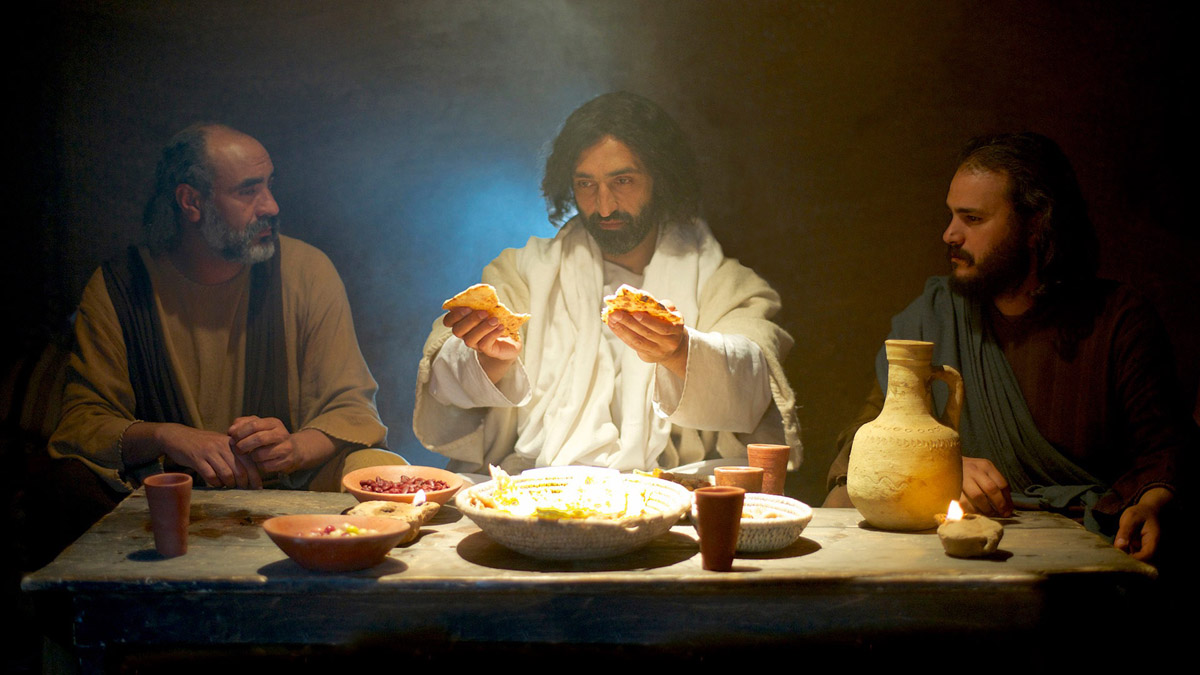
images – courtesy and used with permission – www.freebibleimages.org – copyright LUMO Project
“As they came near the village to which they were going, he walked ahead as if he were going on. But they urged him strongly, saying, ‘Stay with us, because it is almost evening and the day is now nearly over.’ So he went in to stay with them. When he was at the table with them, he took bread, blessed and broke it, and gave it to them. Then their eyes were opened, and they recognized him; and he vanished from their sight. They said to each other, ‘Were not our hearts burning within us while he was talking to us on the road, while he was opening the scriptures to us?’”
—Luke 24:28–32
Upon reading about Cleopas on the road to Emmaus, I realized that his words “Stay with us” are an incredible prayer.
The first word, stay, expresses my desire to be with Jesus. By asking him to stay, I am inviting and welcoming him into my life. Such an encounter, the Gospels make abundantly clear, will transform me in ways I cannot imagine.
The word with helps me remember how close God is to me, and how close I am to God. God is not some distant deity off in the heavens doing whatever it is deities do. Rather, God wants to be present to me and to spend time with me. And like any good friendship, I like to spend time with those who enjoy my company.
Finally, the word us emphasizes that God shares. Nothing is done alone or in isolation. To love, serve, and praise God is something that I do in community: we are all brothers and sisters. A meal with the Lord is a meal that I share with as many people as possible.
“Stay with us” is a prayer that is at once both humble and magnanimous, just like the Lord himself.
by Bob Burnham, author of Little Lessons from the Saints
Easter Action
► Pray with the 3-Minute Retreat: Our Eyes Were Opened.
► Read Our Road to Emmaus by Lisa Kelly.
© Copyright 2017 Loyola Press. All Rights Reserved. Used with permission – https://www.loyolapress.com. https://www.ignatianspirituality.com
Saint Kateri Tekakwitha (‘ɡaderi deɡaˈɡwita in Mohawk), given the name Tekakwitha, baptized as Catherine and informally known as Lily of the Mohawks (1656 – April 17, 1680), was an Algonquin–Mohawk laywoman. Born in the Mohawk village of Ossernenon, on the south side of the Mohawk River, she contracted smallpox in an epidemic; her family died and her face was scarred. She converted to Roman Catholicism at age nineteen, when she was renamed Kateri, baptized in honor of Saint Catherine of Siena. Refusing to marry, she left her village and moved for the remaining 5 years of her life to the Jesuit mission village of Kahnawake, south of Montreal in New France, now Canada. Tekakwitha took a devout vow of perpetual virginity. Upon her death at the age of 24, witnesses said that minutes later her scars vanished and her face appeared radiant and beautiful. Known for her virtue of chastity and mortification of the flesh, as well as being shunned by some of her tribe for her religious conversion to Catholicism, she is the fourth Native American to be venerated in the Roman Catholic Church and the first to be canonized. Under the pontificate of Pope John Paul II, she was beatified in 1980 and canonized by Pope Benedict XVI at Saint Peter’s Basilica on 21 October 2012. Various miracles and supernatural events are attributed to her intercession.
“When they had finished breakfast, Jesus said to Simon Peter, ‘Simon, son of John, do you love me more than these?’ He said to him, ‘Yes, Lord; you know that I love you.’ Jesus said to him, ‘Feed my lambs.’ A second time he said to him, ‘Simon, son of John, do you love me?’ He said to him, ‘Yes, Lord; you know that I love you.’ Jesus said to him, ‘Tend my sheep.’ He said to him the third time, ‘Simon, son of John, do you love me?’ Peter felt hurt because he said to him the third time, ‘Do you love me?’ And he said to him, ‘Lord, you know everything; you know that I love you.’ Jesus said to him, ‘Feed my sheep.’”
—John 21:15–17
Having denied Jesus three times—as the Lord had predicted at the Last Supper—Peter was given a chance to make things right. Jesus asked Peter three times if he loved him.
“Yes, Lord, you know that I love you,” Peter answered each time. And a relationship that was damaged by his denial was re-established by his affirmation of love.
But Jesus wanted more than just words. “Feed my lambs, tend my sheep, and feed my sheep,” Jesus told Peter. Jesus teaches me that love is more than just saying the words, “I love you.” Peter had to enflesh his words with actions.
That is how I understand faith—it is the enfleshing of love. In Peter’s case, his faith took the form of being the shepherd to the flock (that is, the early Church). And while I’m not called to the priesthood or religious life, I have a vocation that is just as important—that of a husband. I cannot simply tell my wife I love her. I have to live it. After all, anyone can say, “I love you.” That requires no great sacrifice. But to feed and nourish another person—that requires a sacrifice that is truly Christlike.
by Bob Burnham, author of Little Lessons from the Saints
Easter Action
► Read New Life in Front of Me by Becky Eldredge.
► Read Praying in Resurrection Joy by Chris Sullivan.
© Copyright 2017 Loyola Press. All Rights Reserved. Used with permission – https://www.loyolapress.com. https://www.ignatianspirituality.com
“Rejoice and be glad!” is what Jesus said on the Sermon on the Mount. It’s also the title of Pope Francis’ new Apostolic Exhortation on holiness in day to day life.
The Full text is available on the Vatican Website at the following link:
“So [Mary Magdalene and the other Mary] left the tomb quickly with fear and great joy, and ran to tell his disciples. Suddenly Jesus met them and said, ‘Greetings!’ And they came to him, took hold of his feet, and worshiped him. Then Jesus said to them, ‘Do not be afraid; go and tell my brothers to go to Galilee; there they will see me.’”
—Matthew 28:8–10
As I watch this scene unfold in my imagination, I cannot help but laugh.
Mary Magdalene and Mary, the mother of James and Joseph, are running from Jesus’ tomb. They had just seen an angel who told them with great fanfare (the earth itself shook with the news) that Jesus had been raised from the dead. “Go quickly,” the angel tells them, “and tell his disciples to meet him in Galilee!”
I crack up when I hear Jesus say to them, “Greetings!” (although, in my imagination, Jesus shouts “Hey, Mary!”). At that moment, I realize that Jesus is excited to see Mary Magdalene and the other Mary. That makes sense. Jesus is excited to tell the disciples the Good News of his victory over sin and death as much as anyone, if not more so. After all, Jesus knew how defeated, lost, and dejected they must have felt just a few days earlier. They saw him—and with him their hopes and dreams—die on the Cross.
Jesus probably couldn’t wait to see them. And that is why I laugh when I imagine Mary Magdalene’s encounter with Jesus: it is the laughter of excitement that accompanies a surprise.
by Bob Burnham, author of Little Lessons from the Saints
© Copyright 2017 Loyola Press. All Rights Reserved. Used with permission – https://www.loyolapress.com. https://www.ignatianspirituality.com
St. Margaret Clitherow was born in Middleton, England, in 1555, of protestant parents. In 1571, she married John Clitherow, a well-to-do butcher in York , and a few years later converted to Catholicism. During the Reformation she harbored fugitive priests, for which she was arrested and imprisoned by the authorities. Recourse was had to every means in an attempt to make her deny her Faith, but she would not recant, or reveal the identities of fellow Catholics. Finally, she was condemned to be pressed to death on March 25, 1586. She was stretched out on the ground with a sharp rock on her back and crushed under a door over laden with stones. .When she learned of her death sentence said: “The sheriffs have said that I am going to die this coming Friday; and I feel the weakness of my flesh which is troubled at this news, but my spirit rejoices greatly. For the love of God, pray for me and ask all good people to do likewise” A relic of her incorrupt hand is kept at the Bar Convent in York.
Ælfric of Eynsham (Old English: Ælfrīc; Latin: Alfricus, Elphricus; c. 955 – c. 1010) was an English abbot, as well as a consummate, prolific writer in Old English of hagiography, homilies, biblical commentaries, and other genres. Aelfric wrote two series of homiles as well as a work on the lives of the saints, in Anglo Saxon. He is also credited with authoring the Old English Hexateuch, was revolutionary, for it was the first time that the Bible was translated from Latin into the vernacular, that is, into Old English. To his translation of Genesis, he wrote a preface. This preface was to ensure that the uneducated who might read this translation of the Old Testament would understand that they ought not believe that the practices of the ancient Israelites were still acceptable for Christians. In his preface, Ælfric employs the same writing techniques that King Alfred used in his preface to a translation of the Cura Pastoralis. Also notable is that in his translation of Genesis Ælfric did not just translate it word for word from the Latin, which was common due to the belief that the word order of sacred Scripture was itself sacred. Rather, he translated much of it by its meaning; he recognized that the meaning of what the Bible said was the most important thing to be conveyed, not the word order.
Below is an excerpt from his homily for Ash Wednesday – still relevant today
| Anglo- Saxon
On þone wodnesdæg wide geond eorðan sacerdas bletsiað swa swa hit geset ís clæne axan on cyrcan and þa siððan lecgað uppa manna hæfda þæt hi habban on gemynde þæt hi of eorðan comon and eft to duste gewendað swa swa se ælmihtiga god to adame cwæð siððan he agylt hæfde ongean godes bebod: ‘On geswincum þu leofast and on swate þu etst þinne hlaf on eorðan oðþæt þu eft gewende to þære ylcan eorðan þe þu of come forðan þe þu eart dust and to duste gewendst.’ Nis þis na gesæd be manna sawlum ac be manna lichaman þe formolsniað to duste and eft sceolan on domes dæg ðurh ures drihtnes mihte ealle of eorðan arisan þe æfre cuce wæron swa swa ealle treowa cuciað æfre on lenctenes timan þe ær þurh wyntres cyle wurdon adydde.
|
English Translation
On that Wednesday, throughout the world, as it is appointed, priests bless clean ashes in church, and then lay them on people’s heads, so that they may remember that they came from earth and will return again to dust, just as Almighty God said to Adam, after he had sinned against God’s command: ‘In labour you shall live and in sweat you shall eat your bread upon the earth, until you return again to the same earth from which you came, for you are dust, and to dust you shall return.’ This is not said about the souls of mankind, but about their bodies, which moulder to dust, and shall again on Judgement Day, through the power of our Lord, rise from the earth, all who ever lived, just as all trees quicken again in the season of spring which were deadened by the winter’s chill.
|
From the CBC news site:
“In the hills of the Galilee, the lush region in the Holy Land where it’s said that Jesus Christ grew up, residents of the town of Jish are preparing to celebrate Christmas Mass in the language Jesus spoke. A handful of people from Jish are at the centre of an effort to revive the Aramaic language — centuries after it all but disappeared from the Middle East….Maronite Christians in Jish celebrate part of their liturgies in Aramaic during services at St. Maroun Church, which takes its name from the fifth-century monk who founded the Maronite movement, which is still active in the Middle East, mainly in Lebanon and Syria….
Shadi Khalloul is the man behind the revival of Aramaic. While he remembers hearing the language in childhood, Khalloul said he didn’t really take notice of it until he was studying Bible literature at the University of Las Vegas. “My instructor was a Catholic instructor, and he said to us as students, ‘Don’t think that Jesus spoke Spanish or English or French or Latin … he spoke Aramaic, a language that disappeared,” Khalloul said. “So I felt offended. I immediately raised my hand and said, ‘Excuse me, instructor, but the language still exists. We still speak it, we still pray in it.'”
The full article may be read HERE:
Courtesy of Ignatianspirituality.com and Loyolapress.com , come these prayers for the lighting of Advent Candles:
First Week:
All-powerful God, increase our strength of will for doing good that Christ may find an eager welcome at his coming and call us to his side in the kingdom of heaven, where he lives and reigns with you and the Holy Spirit one God, forever and ever.
AMEN.
Second Week:
God of power and mercy open our hearts in welcome. Remove the things that hinder us from receiving Christ with joy so that we may share his wisdom and become one with him when he comes in glory, for he lives and reigns with you and the Holy Spirit, one God, forever and ever.
AMEN.
Third Week:
Lord God, may we, your people, who look forward to the birthday of Christ experience the joy of salvation and celebrate that feast with love and thanksgiving. We ask this through Christ our Lord.
AMEN.
Fourth Week:
Father, all-powerful God, your eternal Word took flesh on our earth when the Virgin Mary placed her life at the service of your plan. Lift our minds in watchful hope to hear the voice which announces his glory and open our minds to receive the Spirit who prepares us for his coming. We ask this through Christ our Lord.
AMEN.
© Copyright 2017 Loyola Press. All Rights Reserved. Used with permission – https://www.loyolapress.com. https://www.ignatianspirituality.com
The Advent Wreath and Candles:
The concept of the Advent wreath originated among German Lutherans in the 16th Century. However, it was not until three centuries later that the modern Advent wreath took shape. Research by Prof. Haemig of Luther Seminary, St. Paul, points to Johann Hinrich Wichern (1808–1881), a Protestant pastor in Germany and a pioneer in urban mission work among the poor as the inventor of the modern Advent wreath in the 19th century.During Advent, children at the mission school Rauhes Haus, founded by Wichern in Hamburg, would ask daily if Christmas had arrived. In 1839, he built a large wooden ring (made out of an old cartwheel) with 20 small red and 4 large white candles. A small candle was lit successively every weekday and Saturday during Advent. On Sundays, a large white candle was lit. The custom gained ground among Protestant churches in Germany and evolved into the smaller wreath with four or five candles known today. Roman Catholics in Germany began to adopt the custom in the 1920s, and in the 1930s it spread to North America. Professor Haemig’s research also indicates that the custom did not reach the United States until the 1930s, even among German Lutheran immigrants.
In many Catholic and Protestant churches, the most popular colours for the four surrounding Advent candles are violet and rose, corresponding with the colors of the liturgical vestments for the Sundays of Advent. For denominations of the Western Christian Church, violet is the historic liturgical color for three of the four Sundays of Advent: Violet is the traditional color of penitential seasons. Blue is also a popular alternative color for both Advent vestments and Advent candles, especially in some Anglican and Methodist churches, which use a blue shade associated with the Sarum rite, in addition to Lutheran churches that also implement this practice. One interpretation holds that blue means hope and waiting, which aligns with the seasonal meaning of Advent. Rose is the liturgical color for the Third Sunday of Advent, known as Gaudete Sunday from the Latin word meaning “to rejoice”—also from the first line of the traditional entrance prayer (called the Introit) for the Mass or Worship Service of the third Sunday of Advent; it is a pause from the penitential spirit of Advent. As such, the third candle, representing joy, is often a different color from the other three. More recently, some Eastern Orthodox families have adopted an Advent wreath with six candles symbolizing the longer Christmas fast in Orthodox tradition, which corresponds to Advent in Western Christianity.
A Service of Carols and Nine Lessons:
The Festival of Nine Lessons and Carols is a service of Christian worship celebrating the birth of Jesus that is traditionally followed at Christmas. The story of the fall of humanity, the promise of the Messiah, and the birth of Jesus is told in nine short Bible readings from Genesis, the prophetic books and the Gospels, interspersed with the singing of Christmas carols, hymns and choir music. In its original format, this service would take place on Christmas Eve.
In 1878 the Royal Cornwall Gazette reported that the choir of Truro Cathedral would sing a service of carols at 10:00 p.m. on Christmas Eve.
“The Choir of the Cathedral will sing a number of carols in the Cathedral on Christmas Eve, the service commencing at 10pm. We understand that this is at the wish of many of the leading parishioners and others. A like service has been instituted in other cathedral and large towns, and has been much appreciated. It is the intention of the choir to no longer continue the custom of singing carols at the residences of members of the congregation.”
Two years later, Edward White Benson, at that time Bishop of Truro in Cornwall but later Archbishop of Canterbury, formalised the service with Nine Lessons for use on Christmas Eve (24 December) 1880. The first service took place at 10:00 p.m. on Christmas Eve. There is an oft-repeated myth that the purpose of the service was to keep men out of the pubs. While the original Service of Carols and Nine Lessons was an Anglican invention, it has since become a standard fixture for many Christian churches. It generally retains its original format, although it may also simply be an evening of carol singing accompanied by prayer.
The Jesse Tree:
The Jesse tree helps us connect the custom of decorating Christmas trees to the events leading to Jesus’ birth. The Jesse tree is named from Isaiah 11:1: “A shoot shall come out of the stock of Jesse, and a branch shall grow out of his roots.” Jesse was the father of King David. We adorn a Jesse tree with illustrated ornaments that represent the people, prophesies, and events leading up to the birth of Jesus. The ornaments of the Jesse tree tell the story of God in the Old Testament, connecting the Advent season with the faithfulness of God across four thousand years of history.

“Begin by taking in a deep breath, taking in God’s love, the light of Christ, the wisdom of the Holy Spirit. Exhale all your worries, your challenges, and your fears. During this time of Advent let us reflect on what we can do to prepare for the Lord.
1. Invite the Holy Spirit to help you see the day as the newborn baby Jesus sees it. What joy have you found today? Where have you felt God’s love? What have you done today to prepare the way for Jesus being born into this world for you?
2. Now think about your day as if looking at it through the eyes of a child; what do you see? Did something surprise you? Was it something someone said to you or something you are grateful for? What did you recognize as gifts (thinking about the gifts of gold, frankincense, and myrrh brought to Jesus)? Thank God for the gifts he has given to you today.
3. Take a moment to reflect on the times today when God was especially present to you. Recognize your feelings in those moments. How did you prepare your heart for God’s presence in the coming of Jesus? Where did you feel God’s loving arms wrapped around you the way Jesus felt Mary’s arms? How did you prepare yourself to experience God’s love, forgiveness, and hope?
4. Now take a moment to think about the times when God seemed to be hidden. Where did you struggle to see the Messiah in your life—the way some failed to recognize the birth of the Messiah when Jesus was born? When may you have seen the need for love and didn’t respond (maybe like the innkeeper), or the opportunity for forgiveness and you walked away? How was your heart prepared? Ask God to forgive you for anything that moved your heart away from God’s love and recognizing the birth of Jesus in you. And ask God to help you to open your heart and become the person that God created you to be.
5. Finally, prepare for the hope of Jesus Christ in your life. Think about what you are hopeful for, what you are looking forward to during Advent and the Christmas season. Is your hope like that of a child on Christmas morning? What gifts will you share to be hope for someone else? Ask God to bless all in your life as you prepare the way of the Lord, and ask God to be with you today and every day.”
© Copyright 2017 Loyola Press. All Rights Reserved. Used with permission – https://www.loyolapress.com. https://www.ignatianspirituality.com
From Dot Magis:
“One of the central meditations of the Spiritual Exercises is the Call of Christ the King.
Imagine a call from an earthly leader who has inspired us, and then imagine Christ calling us to join him in helping him to realize God’s kingdom on earth. Does that excite us or scare us? Does it make us hopeful? What does God’s dream for the world mean for us?”
Kevin O’Brien, SJ, shares the following thoughts on the Call of Christ the King,
© Copyright 2017 Loyola Press. All Rights Reserved. Used with permission. www.ignatianspirituality.com
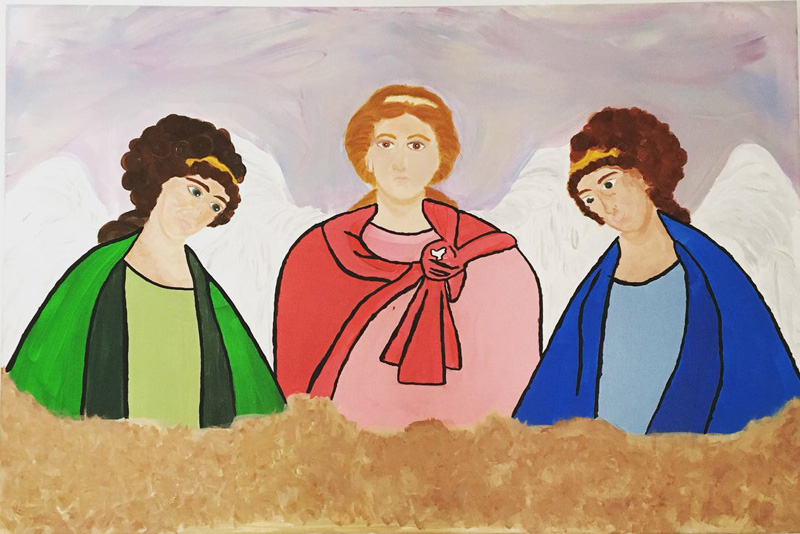 image by and courtesy of Fr.Travis Myrheim, Zenon Park Saskatchewan
image by and courtesy of Fr.Travis Myrheim, Zenon Park Saskatchewan
Pope St. Gregory the Great distinguishes between angels and archangels: “Those who deliver messages of lesser importance are called angels; and those who proclaim messages of supreme importance are called archangels.” The Catechism explains: “From infancy to death human life is surrounded by their watchful care and intercession. ‘Beside each believer stands an angel as protector and shepherd leading him to life.’ Already here on earth the Christian life shares by faith in the blessed company of angels and men united in God” (No. 336). Today we celebrate the Feast of Sts. Michael, Gabriel and Raphael: Archangels.
Some angels are given proper names to denote the service they are empowered to perform. In that holy city, where perfect knowledge flows from the vision of almighty God, those who have no names may easily be known. But personal names are assigned to some, not because they could not be known without them, but rather to denote their ministry when they came among us. Thus, Michael means “Who is like God”; Gabriel is “The Strength of God”; and Raphael is “God’s Remedy.” In his homily for this feast day, Pope St.Gregory states:
” St. Michael:
Whenever some act of wondrous power must be performed, Michael is sent, so that his action and his name may make it clear that no one can do what God does by his superior power. So also our ancient foe desired in his pride to be like God, saying: I will ascend into heaven; I will exalt my throne above the stars of heaven; I will be like the Most High. He will be allowed to remain in power until the end of the world when he will be destroyed in the final punishment. Then, he will fight with the archangel Michael, as we are told by John: A battle was fought with Michael the archangel.
Gabriel & Raphael:
So too Gabriel, who is called God’s strength, was sent to Mary. He came to announce the One who appeared as a humble man to quell the cosmic powers. Thus God’s strength announced the coming of the Lord of the heavenly powers, mighty in battle. [Luke 1:11-38]
Raphael means, as I have said, God’s remedy, for when he touched Tobit’s eyes in order to cure him, he banished the darkness of his blindness. Thus, since he is to heal, he is rightly called God’s remedy.”
“Holy Archangels, Pray for us and for vocations to religious life. The the harvest is great but the laborers are few”
St. Padre Pio was an Italian priest who was known for his piety and charity, as well as the gift of the stigmata. St. Padre Pio was born Francesco Forgione, on May 25, 1887, in Pietrelcina, Italy. His parents were peasant farmers. He had an older brother and three younger sisters, as well as two other siblings who died in infancy. As a child, he was very religious and by the age of five he reportedly made the decision to dedicate his life to God.
On September 20, Padre Pio was hearing confessions when he felt pain in his hands and feet. He noticed the stigmata, the wounds of Christ, appearing on his hands and feet. The experience was painful. Bleeding occurred. The wounds smelled of roses, and although they continued to weep, they never became infected. Doctors who later examined the stigmata were amazed at their perfectly round shape.
“Pray, pray to the Lord with me, because the whole world needs prayer. And every day, when your heart especially feels the loneliness of life, pray. Pray to the Lord, because even God needs our prayers.” – St. Pio of Pietrelcina

Today the Church commemorates the feast of Our Lady of the Rosary, a celebration that has its origin not, as it would seem, in simply a prayer, but in a battle.
On October 7th, 1571 a fleet of ships assembled by the combined forces of Naples, Sardinia, Venice, the Papacy, Genoa, Savoy and the Knights Hospitallers fought an intense battle with the fleet of the Ottoman Empire. The battle took place in the Gulf of Patras located in western Greece. Though outnumbered by the Ottoman forces, the so-called “Holy League” possessed of superior firepower would win the day. This victory would severely curtail attempts by the Ottoman Empire to control the Mediterranean, causing a seismic shift in international relations from East to West. In some respects, and I do not want this claim to be overstated, the world that we know came into being with this victory. This event is known to history as the “Battle of Lepanto.”
Pope Pius V, whose treasury bankrolled part of this military endeavor, ordered the churches of Rome opened for prayer day and night, encouraging the faithful to petition the intercession of the Blessed Virgin Mary through the recitation of the Rosary. When word reached the Pope Pius of the victory of the Holy League, he added a new feast day to the Roman Liturgical Calendar- October 7th would henceforth be the feast of Our Lady of Victory. Pope Pius’ successor, Gregory XIII would change the name of this day to the feast of the Holy Rosary.
Our contemporary sensibilities might make us stir uncomfortably at the association of the Mother of the Prince of Peace with the memory of warfare, strife and the troubled history that preceded and followed the Battle of Lepanto. But the fact of the matter is that this feast was first understood as a celebration akin to what we commemorate on the Fourth of July or D Day. Pope Pius V (later Saint Pius V) interpreted the event as the movement of Providence in favor of the Church and European civilization. He had no qualms in the assertion that the triumph properly belonged to the Mother of God and that in the midst of the rancor of battle, her intercession had moved the “Holy League” to victory. Such warlike associations with Christian Faith and culture likely cannot be sustained today. Some find all this to be offensive to genuine Christian sensibilities.
Thus, the true history of this day has receded into the obscuring mists of the past. In our present circumstances we celebrate the prayer of the Rosary, not the battle of Our Lady of Victory. We recall its efficacy as a source for meditation and contemplation and encourage its practice. If there is reference to a battle at all, it is made to the conflicts of our interior lives, particularly in our desire to pray without the burden of distractions.
And yet I find my thoughts turned towards Our Lady of Victory, of the Mother of the Messiah, who proclaimed God mighty and victorious in her Magnificat, and in these words spoke of the strength of His arm to cast down the mighty and exalt the lowly. I think of all those precursors of the Mother of God- Miriam, the prophetess, who took a timbrel in hand and on the shores of the Red Sea, singing songs in praise of the God of Israel’s triumph over the army of Pharaoh; of Judith and Deborah and the fire that burned within their hearts for justice and the sword that they raised against the enemies of God’s people; of Rahab and the spies and the fall of Jericho; of Esther the Queen, who risked her own life so that her people might be saved. The Bible is a book of battles. There is properly a peace making quality to our Biblical Faith, a hope for a restoration of the concord that the Creator intended between himself and humanity. But there is also a properly oppositional quality to our Faith, the recognition that in knowing what we stand for, we also know what we stand against. We can no more excise conflict from the Bible than we can deny its reality in our own history. We have been placed in the midst of a fallen world, not merely to surrender to its failure to love, but to live in defiance to that which opposes God. Resist we must, but to do so, we attempt to imitate, not the fallen powers of this world, but Christ the Lord, who wrested power away from the powerful, not by force of arms, but in the strength of his will to love us unto death. He is triumphant, but there still are battles left for him to fight in all the Lepanto’s that rage within our own troubled souls. In the midst of these battles I know that Christ the Lord fights for us still, and that the Lady of Victory is at his side.
Fr.Steve Grunow – “Word on Fire” with Permission
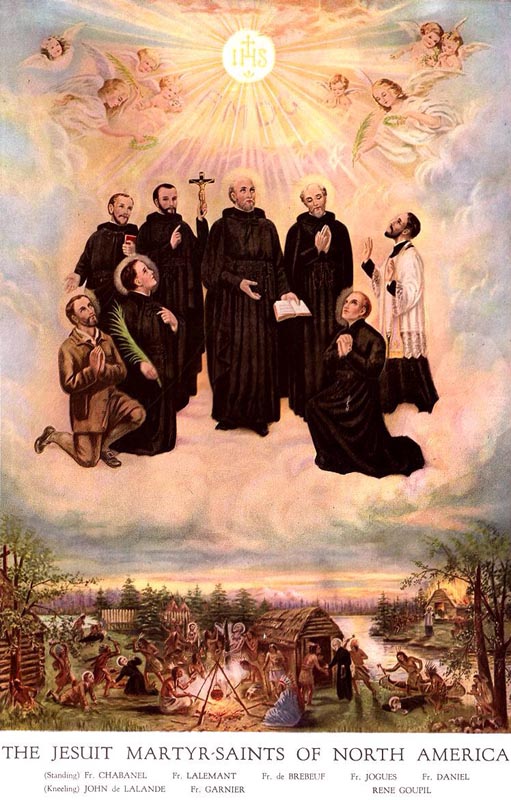 “French Jesuits were the first missionaries to go to Canada and North America after J. Cartier discovered Canada in 1534. Their mission region extended from Nova Scotia to Maryland. Isaac Jogues, John de Brebeuf, Gabriel Lalemant, Noel Chabanel, Charles Garnier, Anthony Daniel, Rene Goupil and John de Lalande (the first six Jesuits, the last two laymen) preached the gospel to the Iroquois and Huron Indians, and after being tortured, they were martyred in the area of what is now Auriesville, New York. The martyrdoms took place between 1642 and 1649. Ten years after the martyrdom of St. Isaac Jogues, Kateri Tekakwitha was born in the same village in which he died. These martyrs are co-patrons of Canada.”
“French Jesuits were the first missionaries to go to Canada and North America after J. Cartier discovered Canada in 1534. Their mission region extended from Nova Scotia to Maryland. Isaac Jogues, John de Brebeuf, Gabriel Lalemant, Noel Chabanel, Charles Garnier, Anthony Daniel, Rene Goupil and John de Lalande (the first six Jesuits, the last two laymen) preached the gospel to the Iroquois and Huron Indians, and after being tortured, they were martyred in the area of what is now Auriesville, New York. The martyrdoms took place between 1642 and 1649. Ten years after the martyrdom of St. Isaac Jogues, Kateri Tekakwitha was born in the same village in which he died. These martyrs are co-patrons of Canada.”
Excerpted from Saints of the Roman Calendar by Enzo Lodi
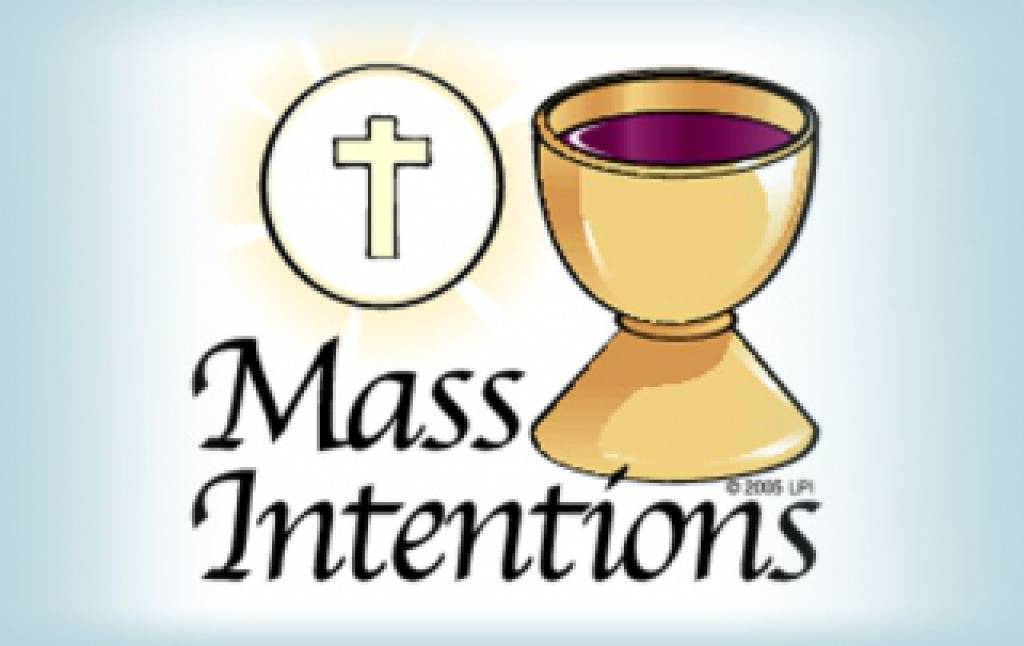
In a blog post, Fr. Travis Myrheim of the Pasquia Area Catholic Church parishes of Notre Dame de la Nativité, Zenon Park, St. Lucy, Arborfield, and Canadian Martyrs, Carrot River, talks about Mass Intentions and their importance.
The full article may be read here: Mass Intentions
The month of October is dedicated to the Holy Rosary. According to an account by fifteenth-century Dominican, Alan de la Roch, Mary appeared to St. Dominic in 1206 after he had been praying and doing severe penances because of his lack of success in combating the Albigensian heresy. Mary praised him for his valiant fight against the heretics and then gave him the Rosary as a mighty weapon, explained its uses and efficacy, and told him to preach it to others.
“Since the prayers of the Rosary come from such excellent sources — from Our Lord Himself, from inspired Scripture, and from the Church — it is not surprising that the Rosary is so dear to our Blessed Mother and so powerful with heaven.
“If we consider the power of the Rosary as seen in its effects, we find a great abundance of proofs of its wonderful value. Many are the favors granted to private individuals through its devout recitation: there are few devoted users of the Rosary who cannot testify to experiencing its power in their own lives. If we turn to history, we see many great triumphs of the Rosary. Early tradition attributes the defeat of the Albigensians at the Battle of Muret in 1213 to the Rosary. But even those who do not accept this tradition will admit that St. Pius V attributed the great defeat of the Turkish fleet on the first Sunday of October, 1571, to the fact that at the same time the Rosary confraternities at Rome and elsewhere were holding their processions. Accordingly, he ordered a commemoration of the Rosary to be made on that day. Two years later, Gregory XIII allowed the celebration of a feast of the Rosary in churches having an altar dedicated to the Rosary. In 1671, Clement X extended the feast to all Spain. A second great victory over the Turks, who once, like the Russians, threatened the ruin of Christian civilization, occurred on August 5, 1716, when Prince Eugene defeated them at Peterwardein in Hungary. Thereupon Clement XI extended the feast of the Rosary to the whole Church.
“Today, when dangers far greater than those of the ancient Turks threaten not only Christianity but all civilization, we are urged by our Blessed Mother to turn again to the Rosary for help. If men in sufficient numbers do this, and at the same time carry out the other conditions that she has laid down, we have the greater reason for confidence that we will be delivered from our dangers.” — Mary in our Life by Fr. William G. Most
The Daily Examen is a technique of prayerful reflection on the events of the day in order to detect God’s presence and discern his direction for us. The Examen is an ancient practice that can help us see God’s hand at work in our lives. The Examen is described by Ignatius Loyola in his Spiritual Exercises. St. Ignatius thought that the Examen was a gift that came directly from God, and that God wanted it to be shared as widely as possible. One of the few rules of prayer that Ignatius made for the Jesuit order was the requirement that Jesuits practice the Examen twice daily—at noon and at the end of the day.
In its simplest form, the Examen can be described in 5 basic steps:
1. Become aware of God’s presence in your day and life.
2. Review the day with gratitude to God for all that the day contained.
3. Pay attention to your emotions and feelings that come from that review
4. Choose one feature of the day and pray based on it.
5. Look toward to tomorrow, and ask God for guidance in that new day.
In addition, there are many variations of the Examen that can be used as part of ones daily prayer life. Some of these variations may be found at this link – Ignatian Sprituality Website – Examen Variations.
In addition, information on The Spiritual Exercises may found at this link – The Spiritual Exercises of St.Ignatius.
HAC

